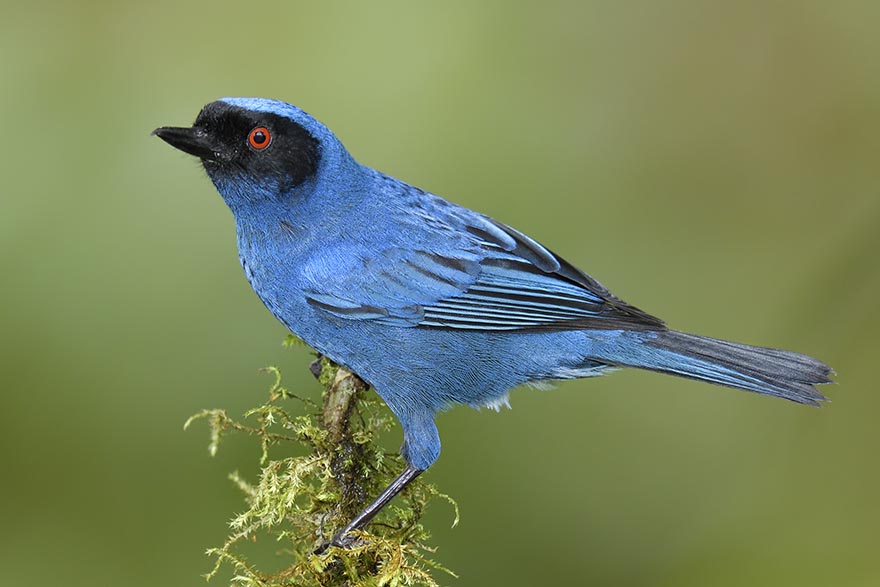Nikon’s D500 is the first pro crop sensor released since the D300s was announced in July of 2009. It has been a long wait, and Nikon certainly needed a competitor to Canon’s excellent 7D. Since retiring my D300, I’ve been shooting full frame cameras ever since, however I’ve wanted another crop body to add to my pack and provide a crop (1.5x) to my existing lenses.
My D500 arrived a few days before the hummingbird photography workshops in Ecuador , so I tossed it in my bag and was able to experiment with it on the beautiful birds in the regions I was visiting. Below are my thoughts after playing with the camera for 3 weeks. These aren’t scientific comparisons, comparing one body to another, however they are real life samples of subjects that I shoot regularly. All images have been processed to see how my noise reduction techniques work with the high ISO images taken from the camera. I am more concerned with the final product and recovery of an image, rather than the noise visible in-camera.
Auto Focus – This has been greatly improved. The tracking is impressive, even with fast moving birds. I have never been a fan of the 3D auto-focus until now. In past models, such as the D4, the 3D auto-focus did not work very well with birds in flight. In the new models (D500 and D5) 3D is impressive. I would lock on the bird, and as the bird would hover and move around, the auto-focus would hold its lock.
The below image of the sword-bill hummingbird was taken with 3D Auto-focus. As the hummingbird flew around, the tracking followed it very well. I took 9 images, and 8 were very sharp, with an extremely low depth of field. The one that was not sharp, was just a bit soft. I’ll take that all day long with these tough to track birds.
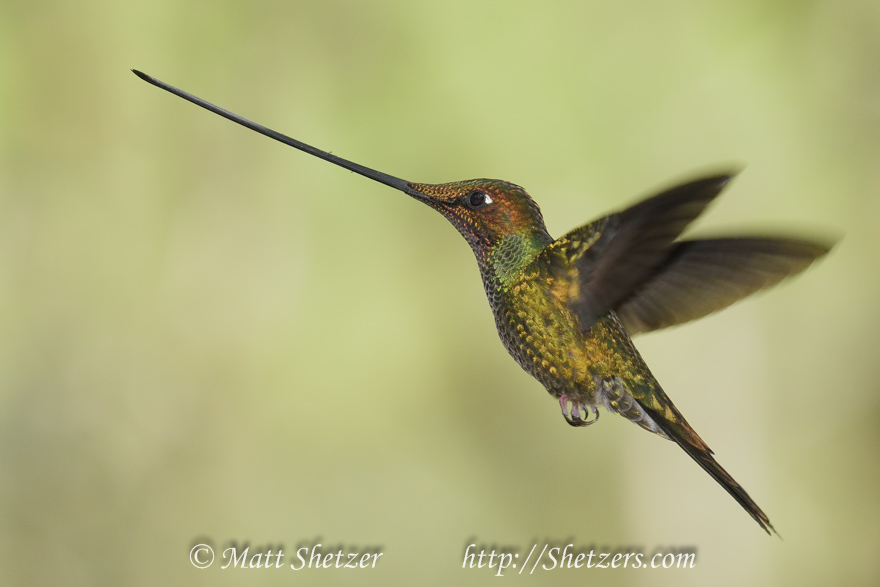
The unique Sword-billed hummingbird taken with the D500 in flight with natural light and a small fill flash.
The Technical Details: Focal Length 300mm, Shutter Speed 1/800sec, Aperture f/8, ISO 2000
High ISO – The D500 ISO is very impressive. I am finding I will shoot up to 1600 or 2000 ISO in order to raise my shutter speed for the hummingbirds. There is noise at these levels, however most is removed with noise reduction software like Topaz’s Denoise. When I had my D300, I would only go up to 800 ISO. The image of the sword-bill above was taken at ISO 2000 to produce the shutter needed for the natural light shot.
The below examples have been reduced for web use to 880 pixels wide.
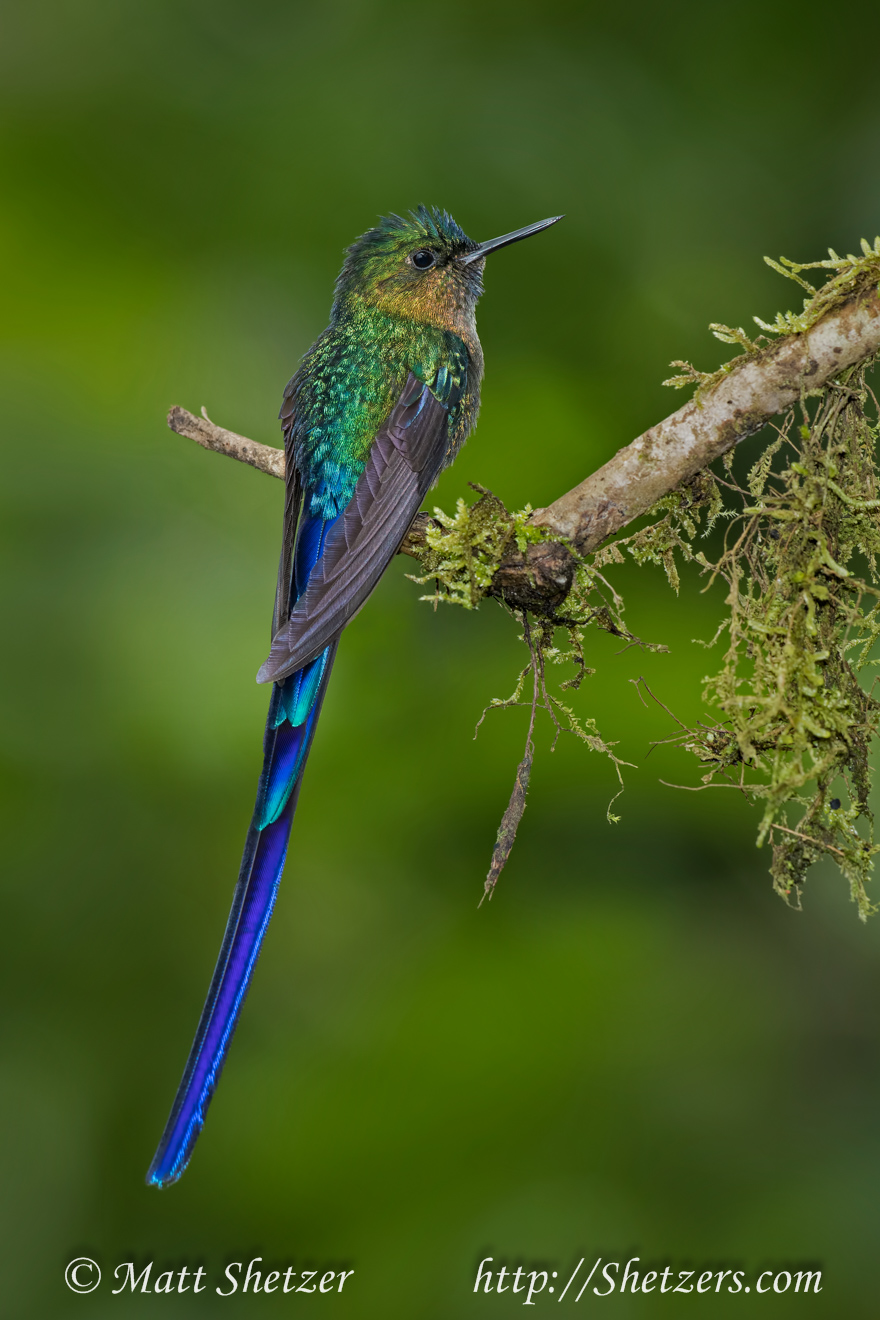
This image was taken at ISO 1000 and processed with Topaz Denoise. Notice the high level of detail remaining
The Technical Details: Focal Length 300mm, Shutter Speed 1/250sec, Aperture f/8, ISO 1000
Zoomed into 100%, you can see the feather detail of this small bird.
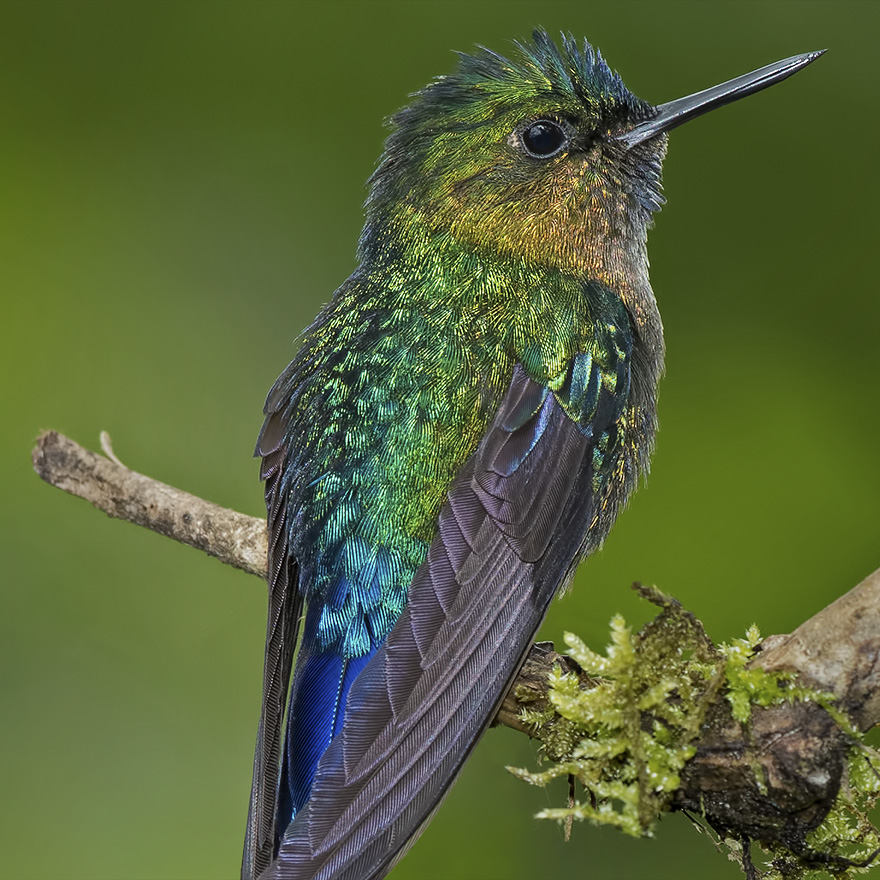
100% crop to display the detail captures at 1000 ISO
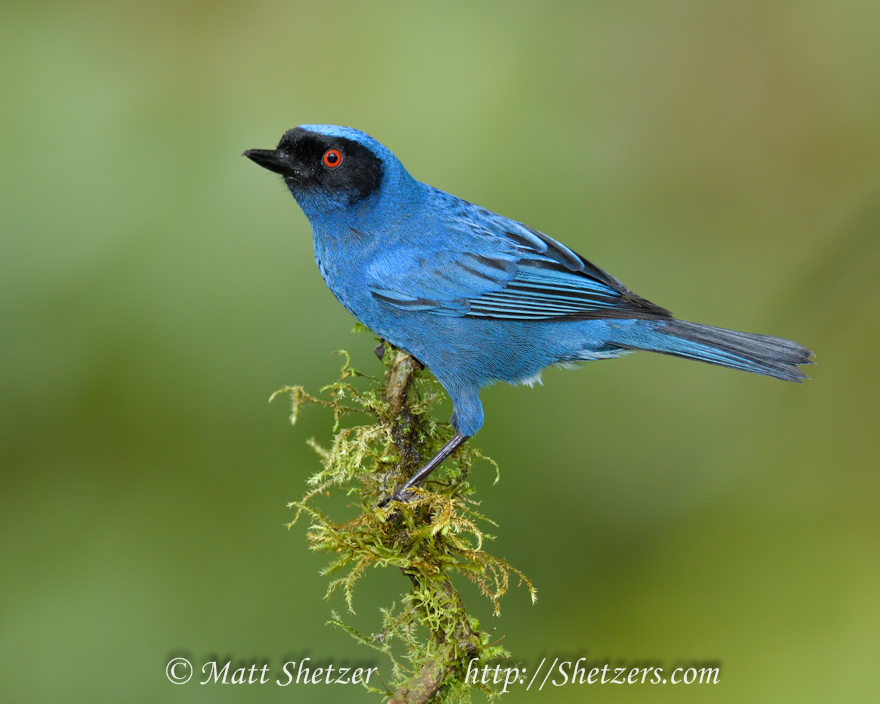
Masked flowerpiercer taken at ISO 1000.
The Technical Details: Focal Length 300mm + 1.4TC (420mm), Shutter Speed 1/250 sec, Aperture f/6.3, ISO 1000
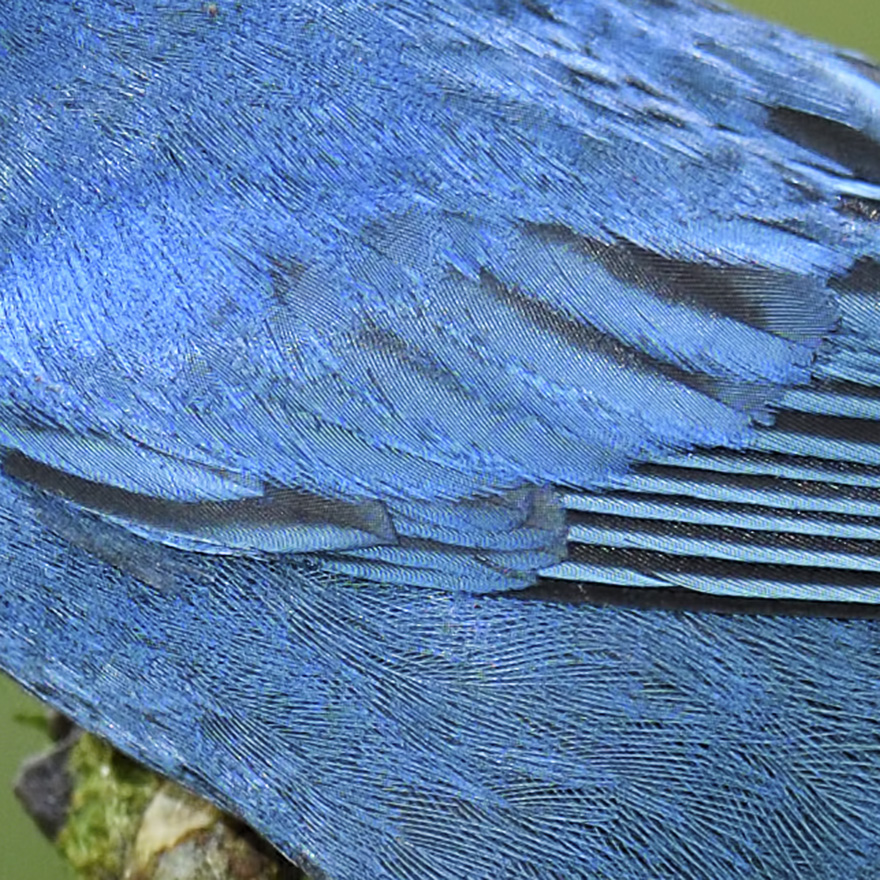
100% crop to display the detail captures at 1000 ISO
Picture Controls – I’ve always shot standard picture controls for most of my subjects, however when I configured the D500 with standard, it was far too harsh for my liking. After a lot of tinkering, I ended up modifying the Standard picture controls to the following:
- Sharpness = 3
- Clarity = 0
- Contrast = -1.25
- Brightness = -.25
- Saturation = -1.25
- Hue = 0
I am still fine tuning the picture controls, but I am finding that colors seem more accurate than the last generation of cameras.
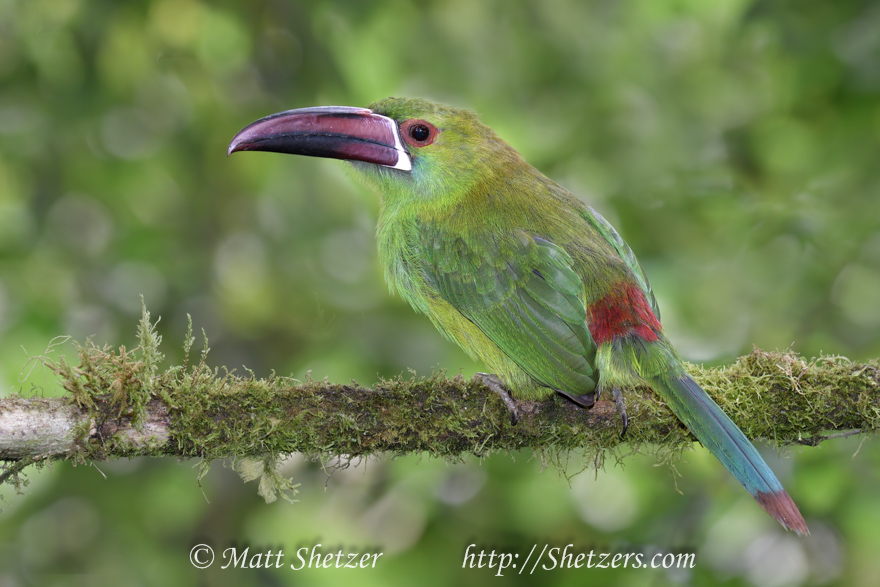
Notice the more natural look of colors with the above settings. Crimson-rumped toucanet found in the highlands of Ecuador.
The Technical Details: Focal Length 300mm, Shutter Speed 1/60sec, Aperture f/8, ISO 1250
Detail and Sharpness
The detail has been excellent with the D500. I really got close to some hummingbirds to look at the feather detail that was captured.
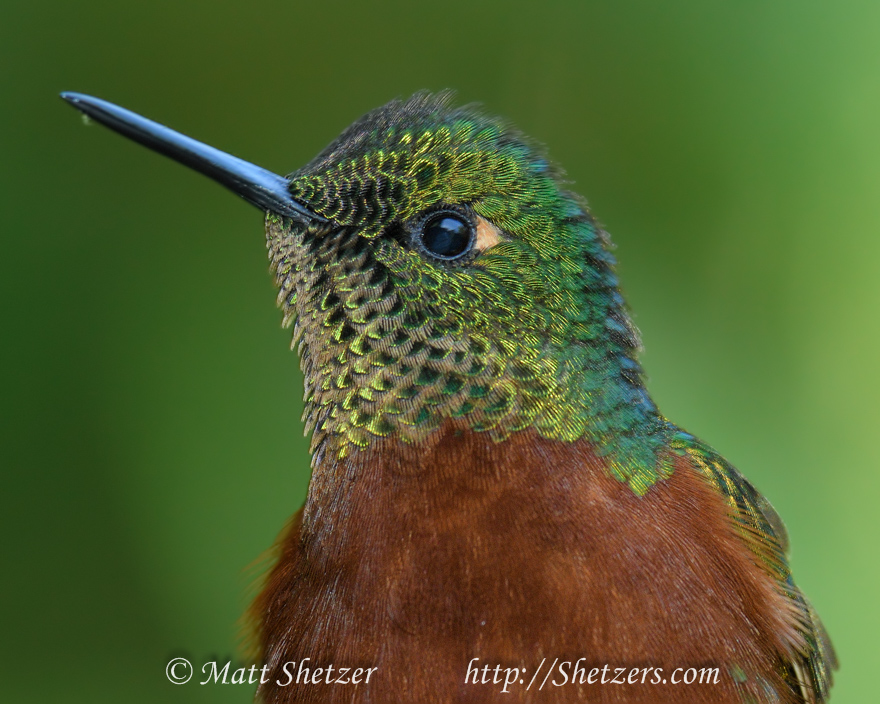
Chestnut-breasted Coronet taken close up with a 300mm f/2.8. Notice all the feather detail around the eye. The beak is a touch out of focus due to the extremely low depth of field.
The Technical Details: Focal Length 300mm + 1.4TC (420mm), Shutter Speed 1/100sec, Aperture f/8, ISO 1600
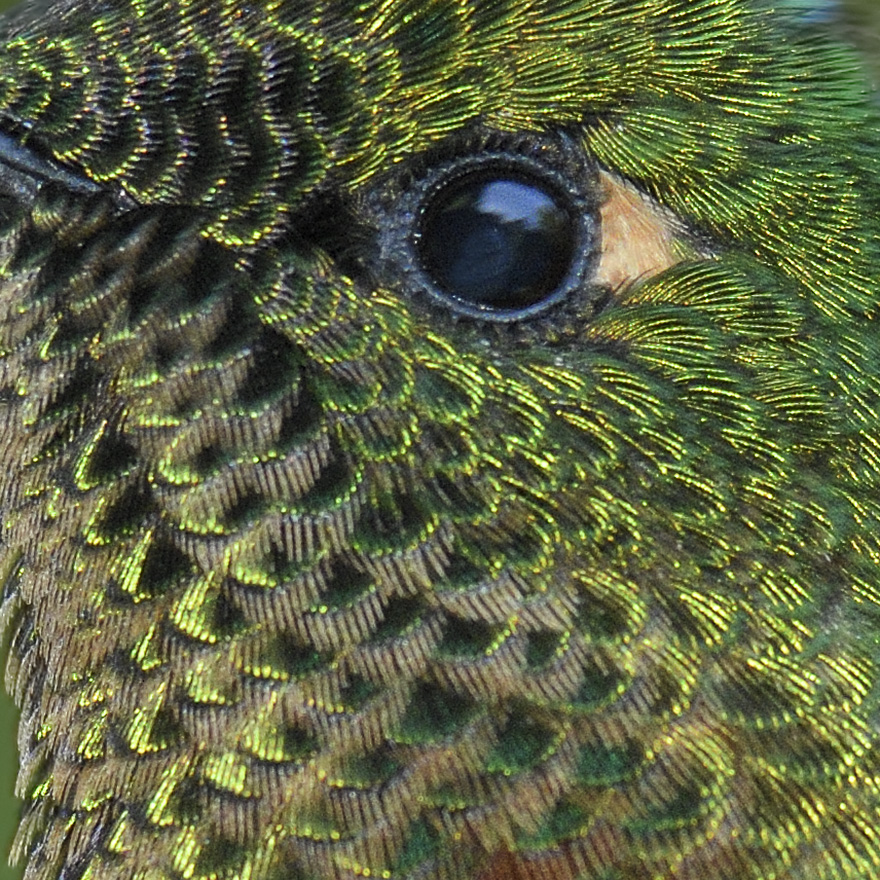
100% crop to display the detail
Wrapping up, basically, I am very happy with this camera. Its fast frame rate, good high ISO for a crop sensor, and improved focusing to obtain nice feather detail have earned it a place in my camera bag at all times !!!
Hope to see you on an upcoming adventure.
Matt Shetzer
Upcoming Photo Workshop Schedule
